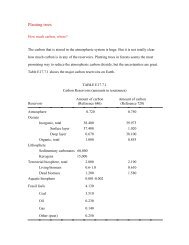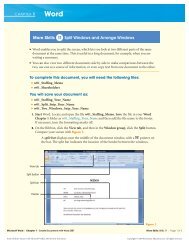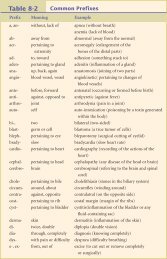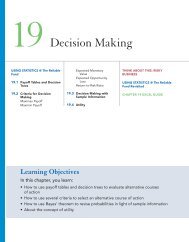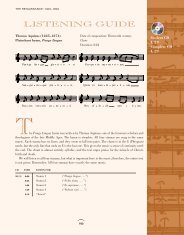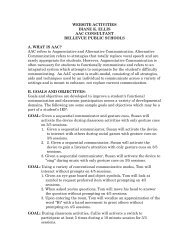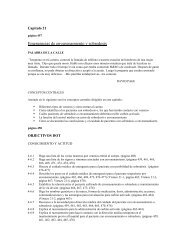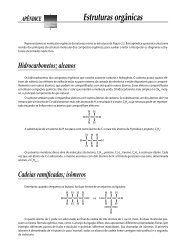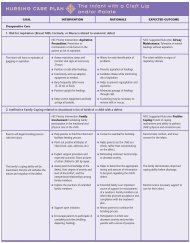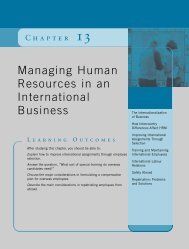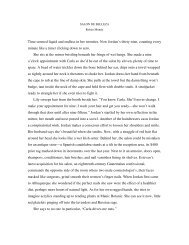chapter
chapter
chapter
Create successful ePaper yourself
Turn your PDF publications into a flip-book with our unique Google optimized e-Paper software.
192 Unit Three Forces Within<br />
Will California eventually slide into the<br />
ocean as some predict? Have continents<br />
really drifted apart over the<br />
centuries? Answers to these questions<br />
and many others that have intrigued<br />
geologists for decades are now being provided<br />
by an exciting theory on large-scale movements taking<br />
place within Earth. This theory, called plate tectonics,<br />
represents the real frontier of the Earth sciences, and its<br />
implications are so far-reaching that it can be considered<br />
the framework from which most other geological<br />
processes should be viewed.<br />
Early in this century, most geologists thought that<br />
the geographic positions of the ocean basins and continents<br />
were fixed. During the last few decades, however,<br />
vast amounts of new data have dramatically<br />
changed our understanding of the nature and workings<br />
of our planet. Earth scientists now realize that the continents<br />
gradually migrate across the globe. Where landmasses<br />
split apart, new ocean basins are created<br />
between the diverging blocks. Meanwhile, older portions<br />
of the seafloor are carried back into the mantle in<br />
regions where trenches occur in the deep-ocean floor.<br />
Because of these movements, blocks of continental material<br />
eventually collide and form Earth’s great moun-<br />
Figure 7.1 Waputik Range, Banff National Park, Alberta, Canada. (Photo © by Carr Clifton)<br />
tain ranges (Figure 7.1). In short, a revolutionary new<br />
model of Earth’s tectonic* processes has emerged.<br />
This profound reversal of scientific understanding<br />
has been appropriately described as a scientific revolution.<br />
Like other scientific revolutions, considerable time<br />
elapsed between the idea’s inception and its general acceptance.<br />
The revolution began early in the twentieth<br />
century as a relatively straightforward proposal that the<br />
continents drift about the face of Earth. After many years<br />
of heated debate, the idea of drifting continents was rejected<br />
by the vast majority of Earth scientists. However,<br />
during the 1950s and 1960s, new evidence rekindled interest<br />
in this proposal. By 1968, these new developments<br />
led to the unfolding of a far more encompassing theory<br />
than continental drift—a theory known as plate tectonics.<br />
Continental Drift:<br />
An Idea Before Its Time<br />
The idea that continents, particularly South America<br />
and Africa, fit together like pieces of a jigsaw puzzle<br />
originated with improved world maps. However, little<br />
*Tectonics refers to the deformation of Earth’s crust and results in the formation<br />
of structural features such as mountains.




